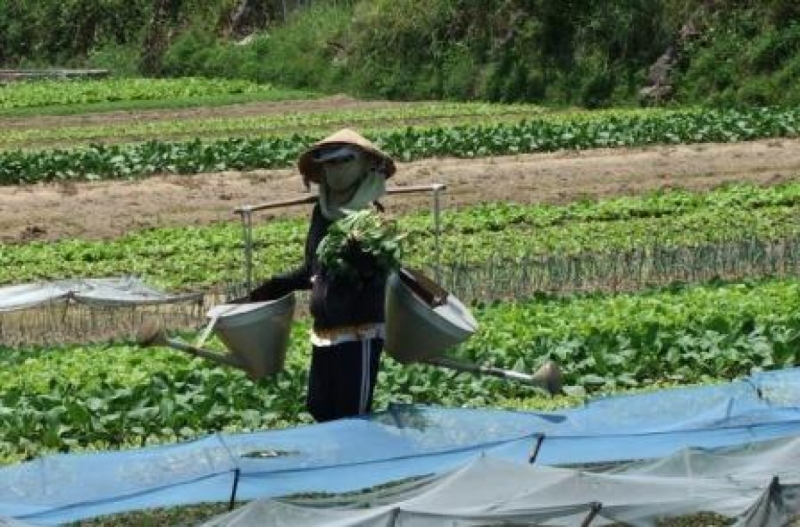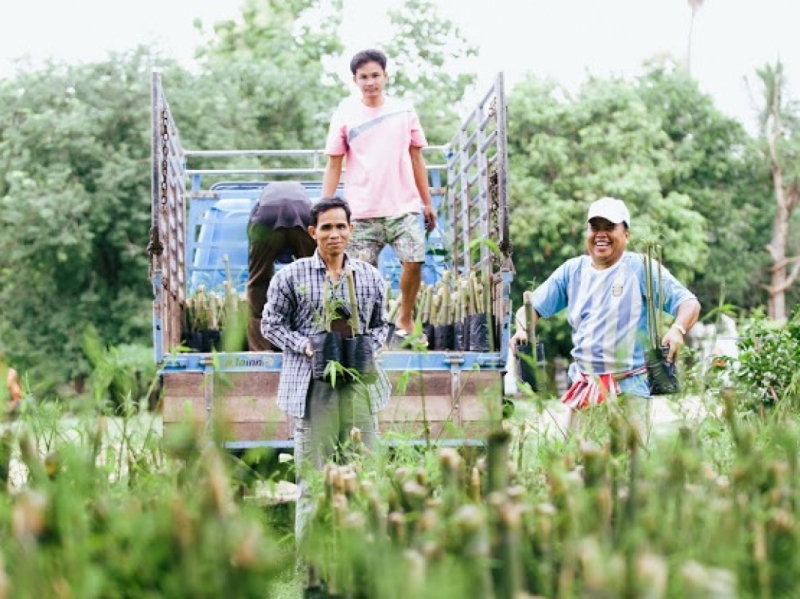



The start of 2015 also marks the beginning of the countdown to the deadline set by the UN on the Millennium Development Goals. Started in 2002, the anti-poverty campaign has spanned families, communities, governments and countries, and with 2015 just around the corner, public and civil sectors alike from around the globe are waiting to see how far we’ve achieved the targets we set more than a decade ago.
As far as the issue of food security is concerned, the UN reports that at the global level, we have successfully reduced by half the number of those living in extreme poverty, and that the target to cut in half those who are undernourished and hungry is within reach. This is promising indeed, and such success is due in part to advances made by governments both in developed and developing countries to step up food production and make safe and healthy food accessible and available especially to the poor and the most vulnerable sectors.
More than a good harvest

In Southeast Asia, agriculture has played an integral role in achieving this first MDG target. The region is considered the primary producer of food supplies particularly rice and corn in Asia and the world. In fact, more than 80% of the global rice produced in 2010 came from Asia, and 31% of it came from the harvests of the region. Agriculture remains the major livelihood of many rural households and communities, and more than half of the population of the countries in the region are engaged one way or another in the agriculture value chain.
The boost in agricultural activity is especially evident among the countries in the Lower Mekong Region. The average food production index of Cambodia and Vietnam from World Bank’s 2002 estimates show, for example, a very significant jump from 80 to 138 in Cambodia and 45 to 152 in Vietnam. Thailand and Vietnam are among the top five rice exporters in the world. In fact, the steadily increasing agricultural production in Vietnam since 2000 has created a surplus in rice and agricultural crops resulting to lower food prices.
Investing in agriculture
The exponential jump in the region’s agricultural production is largely the result of heavy investments in agriculture. Maximizing the region’s naturally rich and diverse environment, both donors and funding agencies and the countries’ governments have invested in improving rural infrastructure to aid agricultural activities. These include the development of modern, large-scale irrigation systems for upland agricultural communities, building of farm-to-market roads for easier market integration of farm products, and improving telecommunications systems to provide access to market information.
Besides structural investments, a lot of work and resources were also put into empowering and capacitating local farmers with agricultural technologies and modern farming practices. Donor agencies and research institutions have focused their efforts in educating farmers through farmer field schools, training of trainers, and farmer experiments, among others.
Regional Cooperation
Another key ingredient in the region’s boost in agricultural productivity is the strong regional cooperation among the nations in the Mekong Delta. Ten years prior to the launch of the UN Millennium Campaign, the countries of the Greater Mekong Subregion begun a program directed at enhancing cooperation among the nations and improving trade relations. In 2002, the countries came out with the GMS Strategic Framework that highlights key regional programs and projects for collaboration.
This enhanced regional relationship among Lao PDR, Vietnam, Myanmar, Thailand, Cambodia, and even China in the upper stream of the Mekong River has encouraged open trade policies and facilitated the easy exchange of information on agriculture and other socio-economic issues and technologies. Investments have opened up. The relaxed border relations have made easier the transfer of goods and have boosted tourism.
Ways forward
Yet the challenge to maintain, if not surpass, the region’s current performance in agriculture remains. In the synthesis report on the post-2015 agenda, new sustainable development goals have been set: end hunger, achieve food security, improve nutrition, and promote sustainable agriculture.
Increased production

The expected boom in population especially in developing countries would mean increased demand for safe and healthy food sources. Producing regions such as Southeast Asia and the Mekong Region should be able to cater to such expected demand by stepping up production levels in the farming, livestock and fishery sectors.
Climate change adaptation and resilience
Climate change remains an unescapable reality and a primary issue that those in the agriculture sector would have to contend with. Climate change brings with it conditions that can heavily impact and change planting and harvest periods and production levels and yield. Unpredictable typhoons and storms can cause heavy flooding especially along the lower streams of the Mekong River. Changing drought patterns can pose serious repercussions for the upland farms in Cambodia, Laos and Vietnam and can change land topography and nutrition, in turn affecting the kind of the crops that can be grown.
Farmers in the Lower Mekong region should be better equipped with the knowledge and skills to adapt to these impacts of the changing climate. More resilient farming practices and technologies should be introduced, and the countries along the Mekong should be working even more to facilitate enhanced exchange of information and technologies.
Sustainable energy sources
The start of the construction of the Xayaburi Dam along the lower stream of the Mekong in 2012 has started a regional debate with many conservationists, environmentalists, civil and farmer groups, and non-profit organizations protesting its construction. While it is true that the Mekong has strong potential as a hydropower energy source, the dam’s construction poses negative agricultural, economic and social effects.
Not only would it result to the displacement of the local communities along the area, but more importantly, the presence of the dam would significantly alter the river’s biodiversity, leading to extinction of more than a hundred local and exotic species.
International organizations like the World Food Programme and International Rivers call for further studies and research that will provide a more comprehensive cost-benefit analysis of such a proposal in both the short and long-term. More than this, there is a challenge to explore other potential sustainable sources of energy that can be tapped in the region to respond to the expected increase in demand for energy.
Water management

Water is at the heart of the agricultural activities of the countries along the Mekong River. Increased production translates to higher usage and demand for water for irrigation. Siltation is a distinct possibility along with pesticide and fertilizer run-off that can be detrimental to the over-all health of the river and its aquatic inhabitants. This in turn can adversely affect the fishery and aquaculture activities that remain as one of the major sources of livelihood for many next to farming. Integrated water resources management therefore remains a top priority.
Continued focus on women entrepreneurship and empowerment
The UN Millennium Campaign has brought to the fore the roles of women and children in agriculture. Beyond 2015, there is a challenge to maintain and continue the same focus given to fostering women empowerment and building their entrepreneurial capacities.
It is true that the countries of the Lower Mekong Region have made a significant headway in improving their agricultural performance. The gains are evident in the countries’ improved GPD and in the enhanced capacity of the local farmers to provide higher and stable income to their families.
But while the poverty levels in these countries may have decreased, the campaign to keep Asia and the rest of the world hunger-free does not end in 2015. The challenge beyond 2015 is more than to keep production levels high to meet the demand; it is the promotion of sustainable agriculture that is healthy both for humankind and the planet.